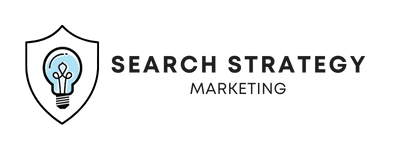 The heart of digital transformation is NOT technology. First and foremost, it’s about the customer experience and the steps a company takes to respond to its customers along this journey. And secondly, it’s about the technology that supports an improved customer experience. Digital products are simply the vehicles that enable companies to communicate with their customers at multiple stages along the buyer’s journey. As The Altimeter Group’s Six Stages of Digital Transformation e-book so eloquently states, digital transformation is not a destination, it’s a journey.
The heart of digital transformation is NOT technology. First and foremost, it’s about the customer experience and the steps a company takes to respond to its customers along this journey. And secondly, it’s about the technology that supports an improved customer experience. Digital products are simply the vehicles that enable companies to communicate with their customers at multiple stages along the buyer’s journey. As The Altimeter Group’s Six Stages of Digital Transformation e-book so eloquently states, digital transformation is not a destination, it’s a journey.
In this same work, written by Brian Solis and Jaimy Szymanski, a six-phase pattern of digital transformation is laid out. This pattern is one that many organizations seem to progress through as they achieve digital transformation.
This fourth phase of digital transformation is aptly named “Converged”.
By Stage Four, Transformation is in a Company’s DNA
 In this stage, the C-suite has reacted to change agents’ request to meet customers where theyare along the buyer’s journey. Digital teams are created a.) to solve redundancy within current business processes and roles, and b.) to bring a newfound efficiency and consistency to the customer experience. The organization is more conscientious about the technology it uses, in that it is purposeful and seamless — — from both a customer and an organizational standpoint.
In this stage, the C-suite has reacted to change agents’ request to meet customers where theyare along the buyer’s journey. Digital teams are created a.) to solve redundancy within current business processes and roles, and b.) to bring a newfound efficiency and consistency to the customer experience. The organization is more conscientious about the technology it uses, in that it is purposeful and seamless — — from both a customer and an organizational standpoint.
Visible Changes Emerge
In this fourth stage of digital transformation, companies see visible symptoms of change in the following areas:
- Data and analytics
- The customer experience
- Governance and leadership
- People and operations
- Technology integration
- Digital literacy
Data & Analytics
Those that have been rallying for change are beginning to see the fruits of their labor as improvements in operation are becoming visible, thanks to an increased focus on analytics. These new insights are pushing strategy development forward. And the efficiency of new processes enables further improvements to be made.
The Customer Experience
Customer experience is at the center of the organization’s operations. All departments and channels are carrying a unified message and goal. In this phase, customer experience is broken down into individual touch points and then mapped out to show the entire product or service experience. The data that is gathered from this new map is used to move business strategy forward throughout the organization.
Governance & Leadership
The digital transformation team that has been put into place by top executives is continuing to help throughout various departments by supporting and influencing with new strategies. The organization’s technology strategy begins to influence the digital culture and vision of the organization, and change agents are the leaders of this new influence. Overall, the organization has a more unified vision under the digital transformation team, which is continually identifying new opportunities and potential.
People & Operations
Perhaps most importantly, although the customer experience is at the heart of digital transformation, through this process, new life is breathed into employee engagement, product development and more.
Walls between departments have started to dissipate. Walls between departments have started to dissipate as collaboration is no longer seen as optional. The IT and customer experience teams partner to produce better results, which in turn also influence the digital culture and vision. To implement new strategies, build up programs and supplement data strategies, analysts and other talent is brought on board. Perhaps most importantly, although the customer experience is at the heart of digital transformation, through this process, new life is breathed into employee engagement, product development and more.
Technology Integration
Many of the digital tools that were used by individual departments are cast aside. In the Converged phased, organizations begin to implement tools that help to more closely align them with the customer experience, such as Experience Cloud software. The benefits of this type of software are three-fold. The first benefit is that this type of tool tends to be tailored by industry so that organizations get exactly what they need, nothing more and nothing less. The second benefit is that this tool gathers and stores all of the data in one place. The third benefit is that the tool uses unique customer records to provide relevant solutions.
Digital Literacy
Training becomes part of the organization’s second nature during this phase. There are even new programs developed to find gaps in expertise and skills, as well as training programs introduced to further develop the workforce. It is expected that the entire workforce, understand the digital customer experience. In addition, human resources and leadership understand the importance of investing in and hiring personnel who have the ability to deliver around the ever-evolving customer experience.
In Closing, Digital Transformation is a Journey, Not a Destination
Transforming a company to more closely align with the customer experience is a process that continues to evolve over time. If you have a minute, we’d enjoy hearing about your company’s digital transformation experience in the comments section below.
Please stay tuned for Stage 6 of our digital transformation series.

